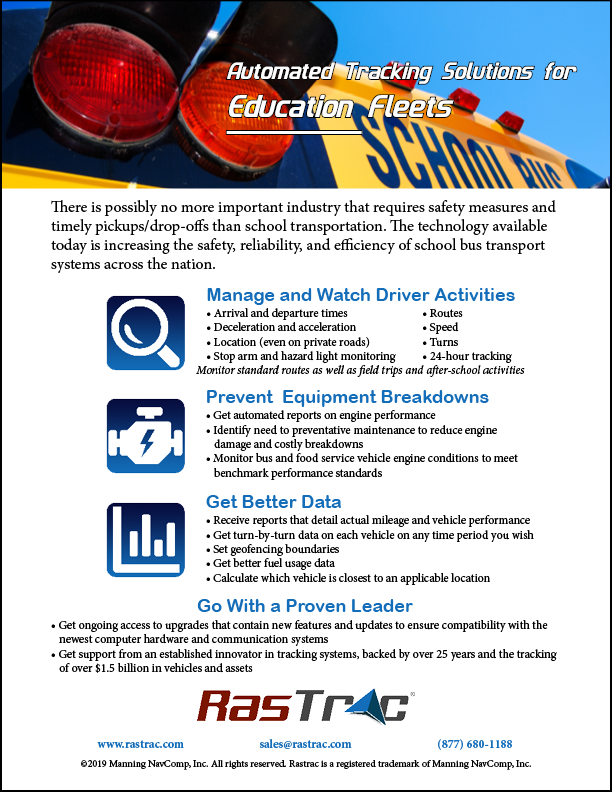The safety and security of our children are of paramount importance. We all want to make sure our kids are protected and safe—even when we can’t watch them directly. This is why many school districts have invested in different safety measures for their school buses.
One key protection measure used by some school systems would be school bus GPS devices.
But, what do school bus GPS systems track, and how do they help promote safety?
Here are a few things that School Bus GPS solutions can be used to track:
1: Current School Bus Location
The most obvious thing that a GPS device tracks is, of course, the current location of an asset. School bus GPS tracking helps school systems keep tabs on where each and every school bus is at any given moment.
This is an incredibly useful piece of information to have for several reasons, including:
- It Helps Prevent School Buses from Disappearing. A lost school bus is a PR nightmare that no school district wants to face. If a bus breaks down on the road and the driver fails to call in, or worse, the driver leaves his or her assigned route and disappears, GPS tracking devices can allow school officials to quickly track the last known location for the missing bus.
- Improved Emergency Response. With luck, your school district will never know the terror of a bus getting involved in a severe accident. However, if the worst happens, knowing the precise location of the bus allows emergency responders to find the vehicle faster, minimizing response time.
- It Helps Keeps Bus Drivers On Task. Is a bus driver sticking to their assigned route, or are they making detours to do other things? By tracking where buses are at all times and setting up route-specific geofences, you can closely monitor drivers and keep them on task so the students can get to class on time.
These benefits all contribute to a safer, more efficient fleet of school buses.
2: Bus Driver Behaviors
Beyond simply telling school officials and bus fleet managers where the GPS-tagged buses are at any given moment, GPS tracking for school buses allows for the monitoring of bus driver habits.
This is accomplished by collecting not just positional data, but accelerometer data to show acceleration, braking, and turning behaviors. The collection of built-in accelerometer information can let school fleet managers identify drivers who have a habit of driving dangerously by accelerating or braking too hard, or by taking turns too fast.
School bus GPS tracking can also be used to verify if school buses are stopping for railroad crossings like they’re supposed to do.
By identifying bad bus driver behaviors and correcting them sooner rather than later, school districts can work to proactively protect the students entrusted to their care.
3: School Bus Maintenance Issues
Vehicle technology has come a long way in the last few decades. One particularly noteworthy addition to vehicle technology is the introduction of onboard diagnostics systems. These systems, which are required to be on all modern vehicles produced for sale in the USA, can provide a wealth of information about the health of a vehicle’s systems using a series of sophisticated sensors.
However, actually getting an alert from this system usually requires a trip to the shop to see why the “check engine” light is on.
With an OBD-II-compatible GPS tracking device, the extra trip to the repair shop just to check the diagnostics system isn’t necessary. These integrated GPS devices can relay important vehicle diagnostics system information while the vehicle is still in use.
This detailed diagnostics system information allows school fleet managers to identify potential maintenance issues early on. In turn, this allows the school system to focus on preventative maintenance—which is far less costly and disruptive than emergency maintenance after a critical bus system fails on the road.
For example, rather than having to replace a cracked radiator, preventative maintenance of a cooling system might have mechanics checking and fixing far less costly components for a fraction of the cost—not to mention the savings on towing fees and overtime for a second bus driver to take over for the driver of the disabled vehicle.
These are just a few of the things that school bus GPS devices can track. For more information, check out some of our other education resources today!
Like what you're reading? Subscribe to our blog.
Get our latest posts straight to your inbox.
Subscribe to Our Blog

Automated Tracking Solutions for Education
Download the feature sheet
Download Now



